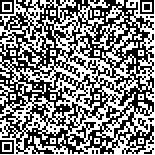| 引用本文: | 唐汉青, 王晓月, 张子楠, 相孟达, 张祥棵, 汤晓辛.多星韭(Allium wallichii)的传粉生态学初探[J].广西植物,2020,40(11):1613-1622.[点击复制] |
| TANG Hanqing, WANG Xiaoyue, ZHANG Zinan, XIANG Mengda,
ZHANG Xiangke, TANG Xiaoxin.Pollination biology of Allium wallichii[J].Guihaia,2020,40(11):1613-1622.[点击复制] |
|
| |
|
|
| 本文已被:浏览 5486次 下载 1695次 |

码上扫一扫! |
|
|
| 多星韭(Allium wallichii)的传粉生态学初探 |
|
唐汉青1,3, 王晓月1,3, 张子楠1,3, 相孟达1,3, 张祥棵4, 汤晓辛1,2*
|
|
1. 贵州师范大学 国家林业局西南喀斯特山地生物多样性保护重点实验室, 贵阳 550001;2. 贵州师范大学 植物生理与发育
调控重点实验室, 贵阳550001;3. 贵州师范大学 生命科学学院, 贵阳 550001;4. 贵阳市第一中学, 贵阳 550001
|
|
| 摘要: |
| 韭菜坪地区是世界最大的野生韭菜花带,全国唯一的野生韭菜花保护区。为探讨多星韭在该地区的传粉生态学特性以及生态适应性,该研究对多星韭的花期、形态特征、访花者进行了定点观察实验,通过人工授粉实验探究其繁育系统; 通过海洋光谱仪检测蜜蜂视觉对两种花色的显著性; 通过气相色谱进行测定其各部分的次级代谢产物的组成。结果表明:多星韭花为雄先熟,单花期为7~8 d,花序持续开花时间为25~28 d; 花蜜量为(0.61±0.07)μL; 中华蜜蜂(Apis cerana)为主要有效传粉者,隧蜂、食蚜蝇、蝇类为偶见访花者; 海洋光谱仪的测定结果表明紫花色在绿叶中对蜜蜂视觉来说更显著。访花者在不同花色间的访花频率有显著性差异,但单次访花频率无差异。当两种花色同时存在时中华蜜蜂会优先访问紫色花的多星韭,在访紫花时,由于受到气味的影响,大部分蜜蜂也会访相邻的白花多星韭。多星韭的次级代谢产物分析结果表明,茎、子房和花梗含有多种刺激性含硫代谢物,花器官以及花蜜拥有多种花香类次级代谢物; 其有性繁殖为自交和异交混合交配系统,具有无融合生殖。综上结果表明,多星韭在该地区不存在花粉限制,多星韭的繁殖学特征表明其具有能较好的环境适应性。 |
| 关键词: 多星韭, 传粉生物学, 次生代谢物, 气相色谱, 反射光谱 |
| DOI:10.11931/guihaia.gxzw201905044 |
| 分类号:Q949.9 |
| 文章编号:1000-3142(2020)11-1617-11 |
| 基金项目:国家自然科学基金与贵州省喀斯特科学研究中心联合基金(U1812401); 国家 自 然 科 学 基 金(31560184, 31300317, 31760076); 贵 州 省 科 技 合 作 计 划 项 目(2019 [1237], LH- [2017]7374, LH- [2015]7764)[Supported by the Joint Fund of the National Natural Science Foundation of China and Karst Science Research Center of Guizhou Province(U1812401); the National Natural Science Foundation of China(31560184, 31300317, 31760076); Science and Technology Cooperation Program of Guizhou Province(2019 [1237], LH- [2017]7374, LH- [2015]7764]。 |
|
| Pollination biology of Allium wallichii |
|
TANG Hanqing1,3, WANG Xiaoyue1,3, ZHANG Zinan1,3, XIANG Mengda1,3,
ZHANG Xiangke4, TANG Xiaoxin1,2*
|
|
1. State Key Laboratory of Southwest Karst Mountain Biodiversity Conservation of National Forestry and Grassland Administration, Guizhou Normal
University, Guiyang 550001, China;2. Key Laboratory of Plant Physiology and Development in Guizhou Province, Guizhou Normal University, Guiyang
550001, China;3. College of Life Sciences, Guizhou Normal University, Guiyang 550001, China;4. Guiyang No.1 High School, Guiyang 550001, China
1. State Key Laboratory of Southwest Karst Mountain Biodiversity Conservation of National Forestry and Grassland Administration, Guizhou Normal
University, Guiyang 550001, China; 2. Key Laboratory of Plant Physiology and Development in Guizhou Province, Guizhou Normal University, Guiyang
550001, China; 3. College of Life Sciences, Guizhou Normal University, Guiyang 550001, China; 4. Guiyang No.1 High School, Guiyang 550001, China
|
| Abstract: |
| Jiucaiping is the largest wild leek flower belt in the world, which is the only wild leek flower reserve in China. In order to explore pollination biology and ecological adaptation of Allium wallichii, we observed the flowering period, flower visitors and nectar, estimated of breeding system by artificial pollination, determined the composition of secondary metabolites in each part by gas chromatography, and detected the significance of bee visiting in two colors by ocean spectrometer. The results were as follows: A. wallichii was protandry, the single flowering stage was 7-8 d, and the continuous flowering time of inflorescence was 25-28 d. The amount of nectar was(0.61±0.07)μL. Apis cerana was the main effective pollinator. The results of the ocean spectrometer showed that purple flower was more significant to bee visiting in leaves. There was a significant difference in flower visit frequency among different flower colors, while there was no difference in single flower visit frequency. When the two colors were present at the same time, the bees gave priority to the purple flowers, due to the influence of smell, when visiting purple flowers, most bees also visited adjacent white flowers. The results of secondary metabolites analysis of A. wallichii showed that stems, ovaries and pedicels contained a variety of irritating sulfur metabolites, while the flower organs and nectar had a variety of secondary metabolites of floral fragrance. Its sexual reproduction was self-matting and cross-mating mixed mating system with apomixis. In summary, there is no pollen restriction of A. wallichii in this area, whose reproductive characteristics have good environmental adaptability. This study provides basic information for resource protection and breeding regulation of A. wallichii. |
| Key words: Allium wallichii, pollination biology, secondary metabolites, gas chromatography, reflectance spectroscopy |
|
|
|
|
|